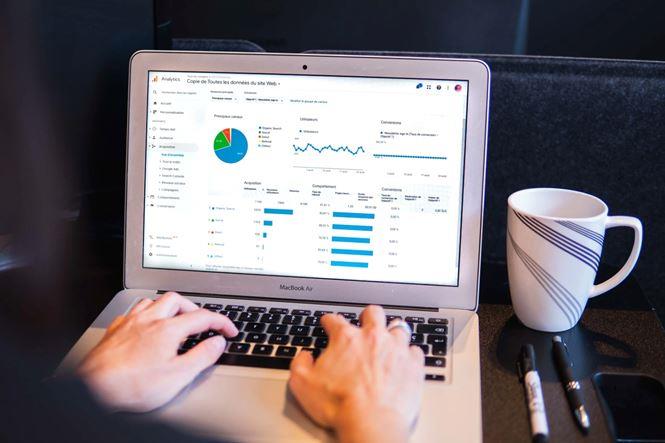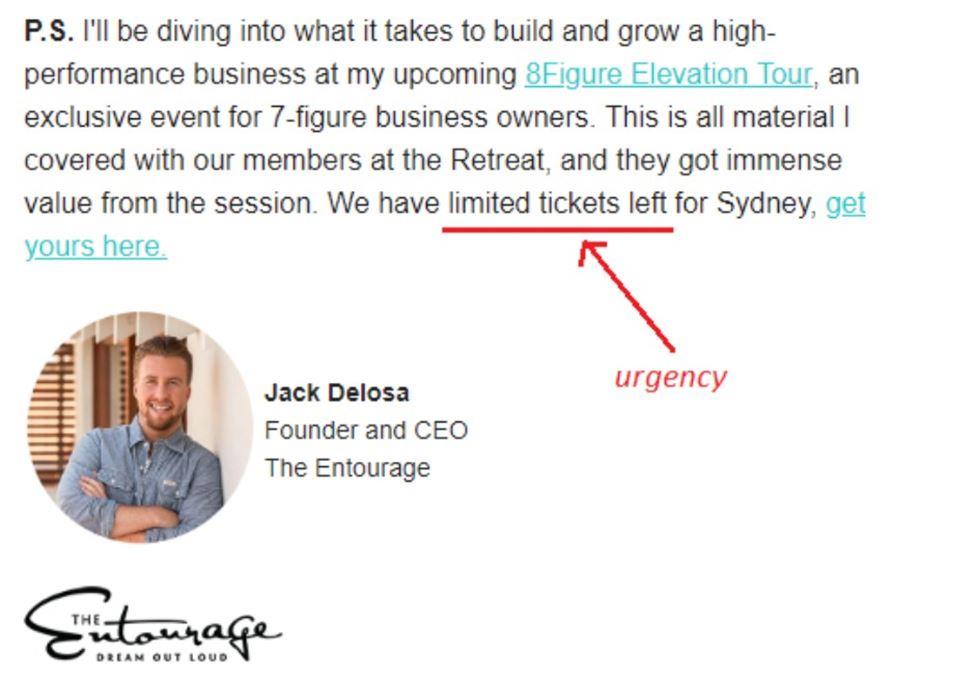
Photo by Myriam Jessier on Unsplash
Learning how to craft emails for ecommerce stores isn’t as hard as you think.
According to HubSpot, every $1 spent on email marketing generates $38 dollars on average if done correctly.
Although there are many similarities between writing emails for eCommerce and B2B services, there is a slight difference in that most people have a different buying mentality.
People have different thoughts on buying from WalMart and Target online than a $2,000 B2B service.
That’s why today I’m going to show you how to craft messages specifically for eCommerce stores so you can improve your customer experience and boost your sales.
Table of Contents
1. Segmentation Is King For Conversions
Segmentation is king when you are writing emails for an eCommerce store.
You want to make it seem like you are talking directly to that person when you are trying to sell your product. That’s why many marketers use re-targeting and personalization automations, so it feels like you are talking directly to them.
For instance, let’s say you have a dog eCommerce store that you want to sell products to.

Now you can segment it into things like:
- How large the puppy is…
- The breed of the puppy…
- How often they bought from you…
It wouldn’t make sense to sell dog food meant for small dogs when you have a giant labrador.
And that’s already great for improving your sales, but the real sales comes in when you are being hyper-specific in your segmentation.
This means if a customer who bought food 2 times for a large Husky, which email subject line do you think is going to work better:
- “Large dog food to live longer and be healthier…”
- “Dog food for large huskies to live longer and be healthier…”
Of course, the second one is going to do better since it’s more specific.
Although there is going to be a lot of segmentations and small lists, writing out emails specifically for each list and changing it slightly is going to improve open rates, click-through rates, and even conversions.
That’s why it’s vitally important for email copywriting to craft your specific message by tagging them along in your email service provider their customer journey.
If you notice them buying husky dog food, tag them with husky dog food so you can create personalized emails later in the future.
The more hyper-specific you can tailor your email, the more sales you will make.
2. Always Include An Offer In Your P.S.
Most people don’t take advantage of including a P.S.(postscript) in your email marketing messages. According to Omnisend, 90% of people who read emails read the P.S. first before the actual email.
This means it is crucial to make sure that what you write in the P.S. can be more important than the actual email message itself.
So here are three ways in how to optimize the P.S. section to help improve customer experience and boost your eCommerce sales:
- Add your offer
- Create a “Cliffhanger” P.S.
1. Add Your Offer
If you don’t know what to put in your P.S. then the easiest and best thing to do would be to include your product or service.
Having people read your offer once in your P.S. and then again in your email doubles the chance to click the link in your email.
And it’s even more important for the people who read the P.S. first because you are priming them you are offering something before they read the actual email.
Here’s how Jack did a superb job on writing a P.S. towards his service…

You can see that he clearly:
- Offered his product
- Created a sense of urgency
- Personalized it with his name and picture
You can do this for your eCommerce stores as well and improve your sales by:
- Creating a 20% discount code in your P.S.
- Create some urgency for any time-limited items in your store
- Offering some help if they have questions for any products you have…
The best way to figure out what works best for your store and audience is to experiment on the different types and see what works best for you.
2. Create A “CliffHanger” P.S.
This is what I like to use for my clients when I am writing emails for their eCommerce stores.
The purpose of this P.S. is to make people want to read your next email.
Here are some examples:
- Be on the lookout for the next email on how you can double your income in 30 days…
- One of our future emails is going to have a huge Black Friday discount (so keep your eyes peeled…)
- We’ll finish this story in the next email…
Just like a wonderful story, a cliffhanger is something that forces the other person to wait before it can satisfy them…
And it’s a powerful tool when done correctly.
3. Write Story-Based Emails To Improve Conversions
What most eCommerce stores do with email is they blast their customers with sales and pictures of their product and cross their fingers, hoping it sells.
Now, that can work for some stores like Wal-Mart or American Eagle, but the problem is that over time subscribers will ignore those types of emails.
However, there are two types of emails I have found that have worked well across multiple niches, and they are:
- Story-based emails
- Testimonial emails
Let me go a bit more in-depth about these types of emails.
1. Story-Based Emails
Story-based emails are emails with a story focused on your product that sells.
Rather than showing your product immediately, you take the customers through a journey and create value around your product.
The reason this works across every industry is that storytelling has been a part of human culture for thousands of years, and we always love good stories.
The crucial point of these stories is to make your customers need your product.
When you can tell a story effectively with your product as a solution, your click-through rates in your emails will soar.
You want to find an angle of a unique story that is newsworthy and interesting at the same time.
For example, let’s say you have an eCommerce store about cat toys.
However, the reason you made this eCommerce store is that you noticed your cat always got bored with its toy within a couple of minutes and found this new toy to work.
Then you can create an email based on something like ” Learn how my cat Maggie was occupied with this toy for over 6 hours…”
And tell a story about how it all happened.
An amazing way to use story-based emails immediately is to use it in your welcome email sequence so you set the tone for your emails right away.
Here’s a resource on how to write welcome emails if you don’t know where to start.
2. Testimonial Based Emails
Everyone knows testimonials are powerful social proof when selling something.
It gives people reassurance that other people have tried the product before you risk buying it yourself.
But most people just slap on testimonials on emails thinking it will convert and they rarely get the results they want.
The best way to use testimonial emails is to find your ideal customer and the testimonial that highlights the pain they want to avoid and emphasizes the desires they want.
For example, let’s say you are an eCommerce store that sells running shoe that focuses on the importance of barefoot running.
Your ideal customer:
- Cares about foot health
- Wants a durable and lightweight running shoe
- Wants the shoe to look decent with his casual clothes
Now, rather than using a testimonial like “The shoes are great! 10/10 recommend!”
You should create a story that highlights exactly what your customer is looking for.
This means that in this example testimonial email you should pick a testimonial that highlights that:
- It’s a better alternative to toe shoes…
- You haven’t had to buy new shoes in 2 years…
- These shoes are flat and comfortable to run in…
And what you do is you can create a testimonial based email for each testimonial you have that highlights these key points.
When you attach a story that represents your ideal audience, your message becomes stronger and clearer to them.
4. Writing Your Email Subject Lines
The only purpose of your email subject line is to get the person to click the email.
If the person doesn’t click the link in your email, then chances are he won’t see your product and buy it.
Email subject lines are tricky because you have to make the audience curious enough to click it without ending up in spam.
It’s also slightly harder for eCommerce stores since many of them just blast sales through their email repeating the words:
- 20% Discount…
- Limited time only…
- Holiday special…
Where it doesn’t compel people to buy from you.
The best way to write your subject lines is to:
- Offer a benefit
- Drive curiosity
- And be specific
You only have a split second to decide whether that person clicks the delete on your email or opens the email.
Here are some words that have historically had high open rates for emails on average below…

A here are also some example subject lines that would be good for testing:
- “Can Meditation stop cancer?”
- “How Sammy lost 40 pounds with a keto diet…”
- “This 3 second rule made me a magnet to women….”
The reason these would be good to test out is because it makes people curious while offering some sort of benefit to that customer.
It’s always good to split-test because even though in theory everything works out, it may not work out for your specific customers.
It’s just a balancing act between being specific, driving enough curiosity and not landing in the promotions tab.
5. Create A list of “Triggered Spam” words To Not End Up In The Promotions Tab

What many email copywriters neglect is that in order for people to read your email, it first has to land in their primary inbox!
And one of the main deciding factors whether your email goes to spam is the use of “triggered spam” words.
These are words that are overused by spam marketers who were spamming with words like:
- Online biz opportunity
- Save big money
- Click to remove
- This isn’t spam
- Lose weight fast
And if you have these words in your subject line, there’s a very high chance it’s going to land into spam.
However, what most people neglect is that even if your emails don’t land into spam, they can land into someone’s promotions or social tab instead.
What this means for you is that if you end up in the Promotions tab in Gmail, chances are your email will not be read for a long time.
So you need to create a list of triggered spam words that not only trigger going into spam, but to promotions.
The way to solve this problem is to create test email accounts where you can send these emails and see where it’s sent.
Ideally, you should have one test account where you click on the email and the other where you do nothing to the email and see where it lands.
If it lands in your promotions tab or spam, take note of what words you used in your subject line and change it up so you don’t land into the promotions tab.
It will not be perfect by any means, but if you keep at this as you send emails every week over time you are going to notice a pattern on which emails are sent to promotions and which are sent straight into your customer’s inbox.
Conclusion
I have gone over multiple eCommerce email copywriting tips to help craft your message to help boost your sales for any ecommerce store with story and testimonial based emails and using your P.S. wisely.
I have also gone over how to write your subject lines without being sent to the promotions and spam tab.
If you aren’t sure where to start with email marketing, here’s also another great guide on where to start.
Let us know in the comments below which tip you found most helpful below!
Anthony Nebel is an email copywriter who helps business leaders generate more sales from their mailing list. Anthony is also working on helping entrepreneurs develop the mindset and marketing skills needed to become profitable on his blog, AnthonyNebel.com, with tips and tricks to succeed.